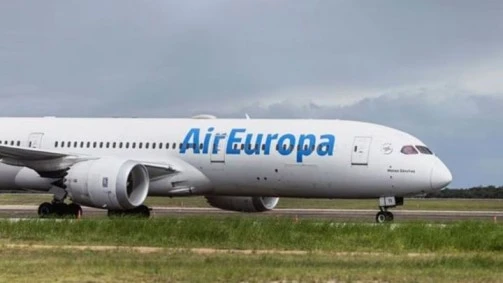Air Europa flight traveling from Madrid to Montevideo came across severe turbulence, that led to injuries to 40 passengers. The Boeing 787-9 Dreamliner, carrying 325 people, made an emergency landing at Natal Airport in northeastern Brazil during the early morning hours.
Official statement by Health Secretariat
The health secretariat of Brazil’s Rio Grande do Norte state said that the injured were taken to the hospitals and clinics in Natal for treatment for abrasions and minor traumas. Out of which eleven remained in hospitals.
Also Read | US Praises India For The Largest Democratic Exercise
A passenger stuck in an overhead compartment
The video was shared on social media and showed ceiling panels went loose during the incident, and another video showed the turbulence, which caused one of the passengers stuck in an overhead compartment. Mariela Jodal, one of the passengers in the incident wrote on her X post( formerly known as Twitter) that many of them were injured in the strong turbulence, but she was saved because of the seat belt.
Similar incidents occurred before
The incident occurred after a Singapore Airlines-operated Boeing 777 in May experienced extreme turbulence that left one passenger dead. The flight from London was forced to make an emergency landing in Bangkok. Many passengers and crew suffered skull, brain, and spine injuries when the plane was hit with extreme turbulence at 37,000 feet over the Irrawaddy Basin.
A similar incident happened a week later, 12 people were injured in a Qatar Airways flight from Doha to Dublin that struck severe bumps. Turbulence-related airline incidents are the most common type, according to a 2021 study by the US National Transportation Safety Board.
Also Read | Singapore Airlines – Severe Turbulence Hits Flight 1 Dead
Main causes of turbulence
There are four cases of turbulence
- Mechanical turbulence– Caused by the friction between the air and the ground, particularly over irregular terrain and man-made structures, which creates eddies and turbulence at lower altitudes.
- Thermal turbulence– occurs on warm summer days when the sun unevenly heats the earth’s surface, significantly affecting the flight path of an airplane approaching a landing area.
- Frontal turbulence- Arises from the lifting of warm air by a sloping frontal surface and the friction between two opposing air masses, generating turbulence in the frontal zone
- Wind shear- Refers to the change in wind direction or speed over a horizontal or vertical distance.
About Author
Ms Vijaya Pramodini SK, an aspiring journalist, is currently dedicated to her studies in journalism and communication. With a keen eye for authenticity, she strives to uncover and present the real facts, embodying the principles of ethical journalism.











